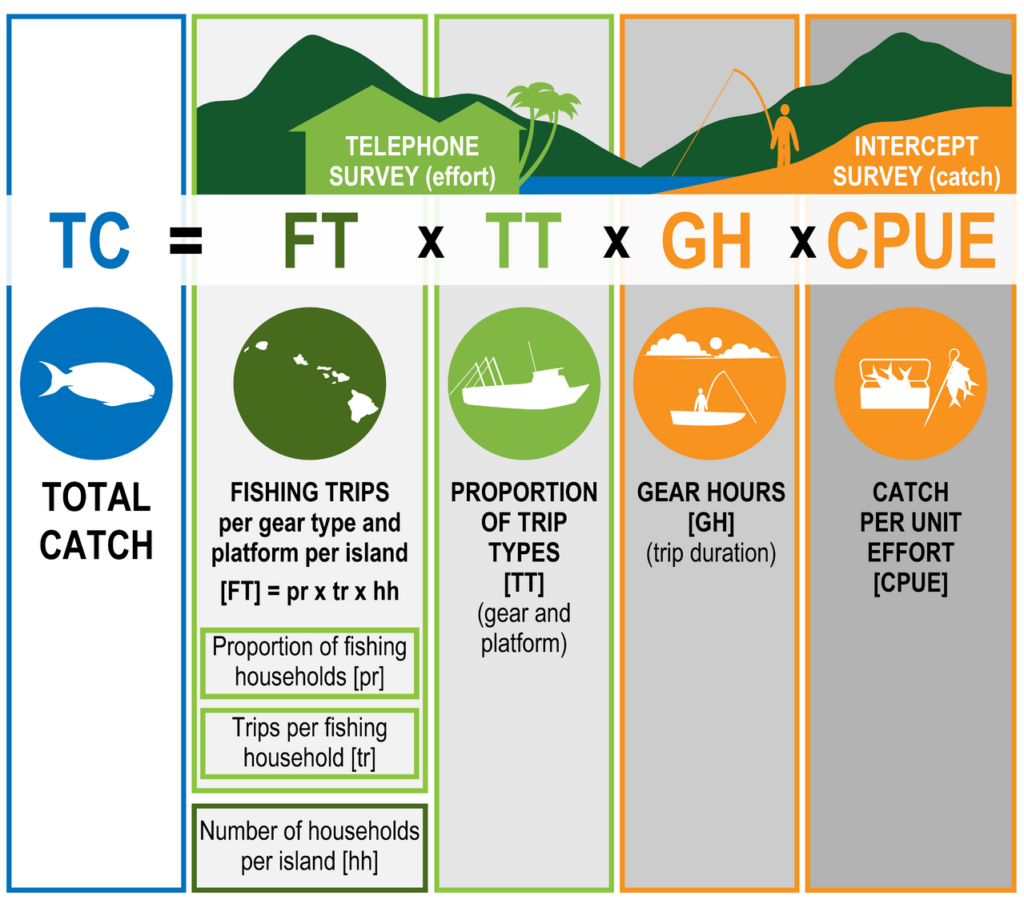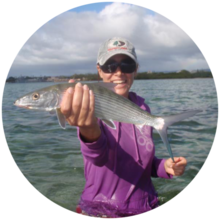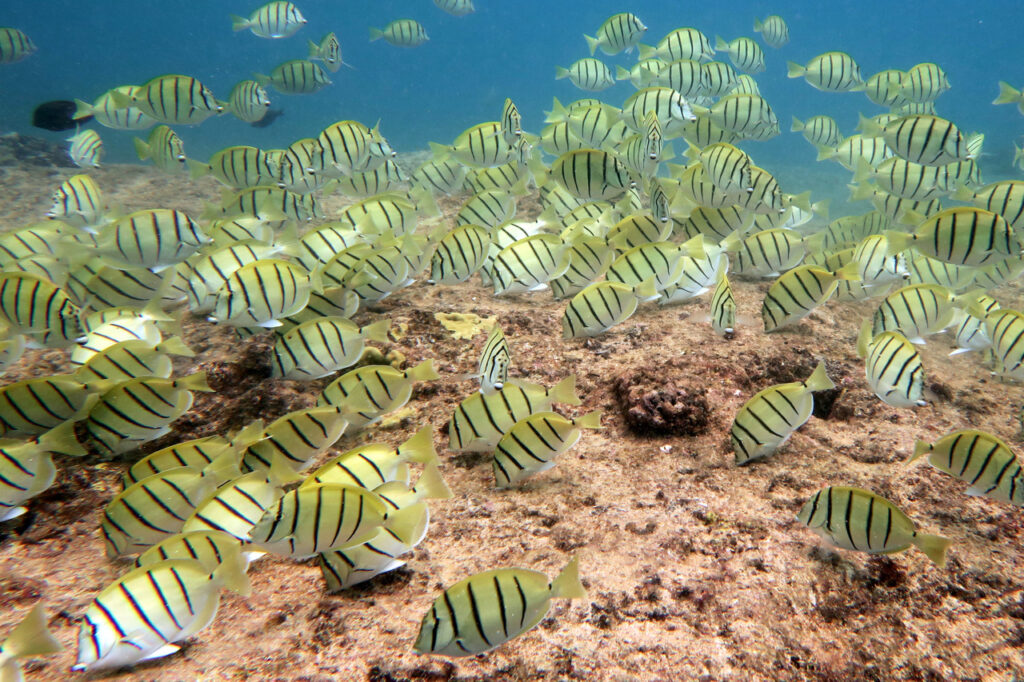via NOAA
This is a question that has eluded fishers and managers alike. In an attempt to find some answers, we teamed up with coral reef fish specialists from the University of Hawaiʻi at Mānoa and Conservation International to pull together all of the data that we could find on nearshore reef fish catch.
We know that fishing is integral to Hawaii’s way of life—people fish to make a living, to feed their families, to share time and meals with others, or to spend time on the ocean. In order to continue these fishing traditions, we need to manage our resources. To do that, we need some information about how much fishing is happening now, such as how many people are fishing and how often do they go? How many fish do they catch on each trip, and how does that add up? We also wanted to know how that differed from island to island.
It’s hard to answer these questions because in Hawaiʻi, there is no fishing registry, license, or permit program for non-commercial fisheries. Managers and scientists here have a hard time measuring catch from these fisheries because it includes many different fish species, requires different gear types, is spread over large areas, and is caught at different times.
Because of this, there is a lack of good data, especially at smaller scales. We have some information, but only at the larger state-wide level, which doesn’t show us the differences between the islands. Another challenge is that most fishing data are for the fish that live in the open ocean. There is less data for fish that thrive in the coral reefs closer to shore, so that’s where we focused our efforts.

Information collected from telephone surveys (outlined in green) or intercept surveys (outlined in orange) informed the calculations for total catch.
The data that we used came from the commercial fisheries and the non-commercial fisheries, which include subsistence and cultural fishing. Nearshore fisheries make up less than 2% of the reported commercial fishing here in Hawaiʻi, so we really needed to look at the non-commercial fisheries to understand the whole story. We looked at the data and estimated how many people were fishing at each island, how many trips they were taking each year, and how many fish they were catching on each trip, and summarized that to come up with our estimate. We incorporated all of that information into models (mathematical representations) to estimate the total annual catch by gear type at the smaller island scale.
We found that non-commercial fisheries produce more than five times the catch of commercial nearshore fisheries. Non-commercial fisheries make up about 84% of the total nearshore catch. From 2004 to 2014, their average annual catch was 900,000 kilograms (~2 million pounds), compared to the annual average commercial nearshore catch over the period of less than 200,000 kilograms (~500,000 pounds).
We learned more about how often communities go out to fish and the gear used at each island. For instance, on Oʻahu, the most populated island, a small number of households engage in fishing in a two-month period, while on Molokaʻi, almost a quarter of all households participate in fishing during the same period. But if we look at this information in terms of number of trips per year, because of the population differences, there are 15 times the number of trips on Oʻahu than there are on Molokaʻi. As far as catch goes, Oʻahu outpaces the other islands and brings in five times the nearshore reef fish catch that Molokaʻi does.
With this new information, fisheries managers can tailor their efforts to smaller spatial scales, such as individual islands or coastlines. This research can be used to inform decision-making and improve management to sustain and conserve the nearshore fisheries for the communities of Hawaiʻi.
Read more: “Estimating Nearshore Coral Reef-Associated Fisheries Production From the Main Hawaiian Islands” (published in PLOS One).
Meet the Blogger

Kaylyn McCoy is a Research Coordinator with the Joint Institute for Marine and Atmospheric Research and the Pacific Islands Fisheries Science Center. She received her B.S. in Zoology from North Carolina State University and her M.S. in Zoology at the University of Hawai‘i at Mānoa. When she isn’t counting fish in remote areas, she is usually on the water in Kaneohe Bay or climbing mountains.
###






Wow , a very good study and well presented. Here in Hawaii the family weekend is centered arround going to the beach, 3 prong spear of reef fish and barbeque.so to see the actual hard data show how much we utilise the nearshore
Fishery for daily life and it has been sustainable for generations is a good thing.
This report has come at a good time as we are not allowed to take reef fish for our personal aquarium, but we can eat them?
There is something wrong with that. Hope to see a change in that law soon. . I firmly believe that the ocean world can be fished sustainably, Im glad enough people believe that letss continue in that direction
Aloha